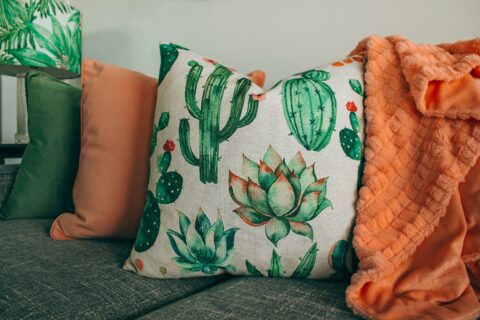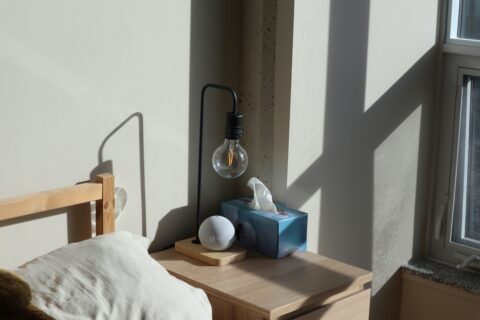Introduction to Design Dialogues
Welcome to Design Dialogues: Conversations on Contemporary Home Decor! In this exciting blog post, we’ll delve into the world of modern design and explore the top trends that are shaping today’s homes. Get ready to be inspired as we chat with interior designers about their insights on functionality, minimalism, sustainability, and more. Plus, we’ll provide you with some handy tips for incorporating contemporary elements into your own space. So sit back, relax, and let’s embark on a journey through the fascinating realm of contemporary home decor!
Top Trends in Contemporary Home Decor
Contemporary home decor is constantly evolving, with new trends emerging every year. In the world of design, it’s all about staying ahead of the curve and embracing fresh ideas that reflect your personal style. So, what are the top trends in contemporary home decor right now?
One trend that has gained popularity is the use of natural materials. From reclaimed wood to stone accents, bringing elements from nature into your space adds warmth and character. Another popular trend is incorporating bold colors through statement pieces or accent walls. Mix vibrant hues like emerald green or deep navy with neutral tones for a modern twist.
In terms of furniture and accessories, clean lines and minimalism continue to dominate contemporary design. Opt for sleek furniture with simple silhouettes and avoid cluttering your space with unnecessary items.
Another significant trend in contemporary home decor is sustainability. Many designers are focusing on eco-friendly materials such as bamboo flooring or recycled glass countertops.
Technology integration has become an essential part of contemporary homes. Smart devices like voice-activated assistants and automated lighting systems add convenience while seamlessly blending into the overall aesthetic.
Stay tuned for more insights on how to incorporate these trends into your own home!
Conversations with Interior Designers:
Conversations with Interior Designers:
Interior designers are the creative masterminds behind stunning home decor. They have a keen eye for detail and an ability to bring spaces to life. In this section, we delve into some insightful conversations with these design experts.
A. The Importance of Functionality in Design
One designer emphasizes that functionality should always be at the forefront of any design project. A space may look beautiful, but if it doesn’t serve its purpose, then what’s the point? This means considering how people will use each room and incorporating practical elements while maintaining aesthetics.
B. Balancing Minimalism and Maximalism
Another conversation explores the art of balancing minimalism and maximalism. Some designers prefer clean lines, neutral colors, and clutter-free spaces; others embrace bold patterns, vibrant hues, and layers upon layers of textures. Finding harmony between these two extremes creates a unique style that reflects individual tastes.
C. Incorporating Sustainable Materials
Sustainability is becoming increasingly important in interior design discussions. Many designers advocate for using eco-friendly materials such as reclaimed wood or recycled glass while still achieving modern elegance.
These conversations offer valuable insights into contemporary home decor trends and inspire us to think outside the box when designing our own spaces.
A. The Importance of Functionality in Design
Functionality is a key aspect in contemporary home design. It goes beyond mere aesthetics and focuses on creating spaces that are not just visually pleasing, but also practical and efficient. Designers today understand the importance of functionality and strive to create homes that can adapt to the needs of their occupants.
One area where functionality plays a crucial role is in furniture selection. Gone are the days when furniture was chosen solely for its appearance. Now, designers carefully consider how each piece will be used and whether it meets the specific requirements of the space.
Storage solutions also play a vital role in functional design. With urban living becoming more common, maximizing storage space has become essential. From built-in cabinets to cleverly designed shelves, there are countless options available to keep your belongings organized without compromising on style.
Another consideration is traffic flow within a room or an entire house. Functionality dictates that spaces should be arranged in such a way that movement feels effortless and natural. This means carefully planning layouts, considering door placements, and ensuring easy access between rooms.
Lighting is another important factor in functional design. Well-placed lighting fixtures can significantly enhance both the aesthetic appeal and usability of any space. Whether it’s task lighting for reading or cooking areas or ambient lighting for relaxation zones, lighting should always serve its purpose effectively.
Prioritizing functionality allows homeowners to make the most out of their living spaces while maintaining an aesthetically pleasing environment. Contemporary designs seamlessly blend beauty with practicality, resulting in homes that truly cater to our needs – making everyday life easier and more enjoyable.
B. Balancing Minimalism and Maximalism
Balancing Minimalism and Maximalism
When it comes to contemporary home decor, one of the most intriguing design dialogues revolves around finding the perfect balance between minimalism and maximalism. While these two styles may seem contradictory at first glance, they can actually complement each other beautifully in creating a space that is both visually appealing and functional.
Minimalism tends to focus on clean lines, simplicity, and a less-is-more approach. On the other hand, maximalism embraces bold colors, patterns, textures, and an abundance of decorative elements. So how do you strike the right balance?
One way is by using minimalist principles as a foundation while incorporating touches of maximalist elements strategically throughout your space. For example, you could start with a neutral color palette and streamlined furniture pieces as your base while adding pops of vibrant colors through artwork or accent pillows.
Another approach is to create designated areas within your home where maximalist design takes center stage while keeping other spaces more minimalist. This allows for visual interest without overwhelming the overall aesthetic.
Furthermore, mixing textures and patterns can help bridge the gap between minimalism and maximalism. Consider combining smooth surfaces with textured fabrics or introducing patterned wallpapers or rugs into an otherwise simple room.
Remember that achieving balance doesn’t mean compromising on personal style – it’s about finding harmony within contrasting elements. When done thoughtfully, balancing minimalism and maximalism can result in a truly unique and captivating interior that reflects your individual taste.
So go ahead – experiment with different approaches to find what works best for you! Whether you lean towards understated elegance or crave vibrant energy in your living spaces, there are endless possibilities for striking the perfect equilibrium between these two captivating styles
C. Incorporating Sustainable Materials
Incorporating sustainable materials into your home decor not only adds a touch of eco-friendliness but also creates a unique and visually appealing space. With the growing emphasis on environmental consciousness, many interior designers are turning towards sustainable design practices to make a positive impact.
One way to incorporate sustainable materials is by using reclaimed wood for furniture and accents. Not only does this give new life to old pieces, but it also reduces the demand for newly sourced timber. Reclaimed wood adds warmth and character to any room, creating a rustic yet contemporary feel.
Another option is exploring natural textiles made from organic fibers such as linen or hemp. These fabrics are not only environmentally friendly but also durable and hypoallergenic. By choosing these textiles for upholstery or curtains, you can create a comfortable living environment while reducing your carbon footprint.
When it comes to flooring options, consider bamboo or cork instead of traditional hardwood. Both bamboo and cork are renewable resources that grow quickly and regenerate easily without harming the environment. These materials offer an elegant look while being resilient and easy to maintain.
Additionally, incorporating recycled glass into your home decor can add both style and sustainability. From countertops to decorative vases, recycled glass products add depth and beauty while reducing waste in landfills.
By consciously selecting sustainable materials for your home decor, you contribute towards making our planet greener without compromising on style or quality. So why not go green with your design choices?
Tips for Incorporating Contemporary Design into Your Home:
Choosing the Right Color Palette
When it comes to incorporating contemporary design into your home, one of the most important aspects to consider is the color palette. Contemporary design often features a clean and neutral color scheme, with pops of bold colors for added interest. Consider choosing shades of white, gray, beige or taupe as your base colors, and then add in vibrant hues like teal or mustard yellow as accent colors.
Mixing Textures and Patterns
Another tip for incorporating contemporary design into your home is to mix textures and patterns. This can create visual interest and add depth to any space. Try combining smooth surfaces with textured ones, such as pairing a sleek leather sofa with a chunky knit throw blanket. Additionally, don’t be afraid to play around with different patterns – geometric prints or abstract designs can work well in a contemporary setting.
Adding Statement Pieces
To truly make an impact with contemporary design in your home, consider adding statement pieces that act as focal points within each room. These could be oversized art pieces on the walls, unique light fixtures hanging from the ceiling, or even bold furniture choices that catch the eye. Remember that less is more when it comes to contemporary design – choose just a few standout pieces rather than cluttering up your space.
By following these tips for incorporating contemporary design into your home – choosing the right color palette, mixing textures and patterns, and adding statement pieces – you can create a stylish and modern living environment that reflects your personal taste while staying on-trend with current interior design aesthetics.
A. Choosing the Right Color Palette
Choosing the right color palette is a crucial aspect of contemporary home decor. It sets the tone for the entire space and can greatly influence the overall atmosphere. When selecting colors, it’s important to consider both personal preference and current design trends.
One popular choice for contemporary interiors is a neutral color scheme. This creates a clean, minimalist look that allows other elements in the room to take center stage. Shades of white, beige, gray, and taupe are commonly used as base colors in these palettes.
On the other hand, bold and vibrant color schemes can inject energy and personality into a space. These palettes often feature bright hues like teal, mustard yellow, or fuchsia. They create a lively and dynamic environment that exudes creativity.
Another approach is to embrace contrasting color combinations. Pairing opposites on the color wheel – such as blue and orange or purple and yellow – can create striking visual impact while maintaining balance.
Incorporating accent colors is another way to add interest to your home decor. These are typically bolder shades that are used sparingly throughout the space – through accessories like pillows or artwork – to provide pops of visual excitement.
Choosing the right color palette comes down to personal taste and what mood you want your home to evoke. Whether you opt for calming neutrals or eye-catching bolds, make sure it reflects your unique style!
B. Mixing Textures and Patterns
Mixing textures and patterns is a great way to add visual interest and depth to your contemporary home decor. By combining different materials, fabrics, and prints, you can create a unique and dynamic space that reflects your personal style.
One way to mix textures is by incorporating various tactile elements throughout your home. For example, you could pair a soft velvet sofa with a rough-hewn wooden coffee table or layer cozy faux fur rugs over sleek tile floors. This contrast in textures creates an intriguing juxtaposition that adds dimension to the overall design.
When it comes to patterns, don’t be afraid to mix and match! Experiment with different scales and styles for an eclectic look. You might try pairing a bold geometric print with a delicate floral pattern or layering stripes with abstract motifs. The key is finding balance – choose complementary colors or stick within a cohesive color palette to ensure the patterns don’t clash.
If you’re unsure about how much texture or pattern is right for your space, start small by adding accent pieces like throw pillows or decorative accessories. This allows you to experiment without overwhelming the room’s aesthetic.
Remember, mixing textures and patterns should be fun! Don’t be afraid to take risks and let your creativity shine through in every corner of your home. So go ahead – embrace the beauty of variety in design!
C. Adding Statement Pieces
Adding Statement Pieces
When it comes to contemporary home decor, incorporating statement pieces can make all the difference in elevating your space from ordinary to extraordinary. These bold and eye-catching items are designed to command attention and serve as focal points within a room.
One way to add a statement piece is by choosing furniture that stands out. Consider investing in a unique vintage armchair with vibrant upholstery or a modern, sculptural coffee table that becomes an art installation on its own. These standout pieces not only provide functionality but also add character and personality to your living space.
Another option is to incorporate striking artwork into your interior design. A large abstract painting or an oversized photograph can instantly create drama and draw the eyes of anyone who enters the room. Don’t be afraid to experiment with different styles and mediums – mix traditional landscapes with contemporary portraits for an eclectic look.
In addition, lighting fixtures can act as statement pieces too. Instead of opting for simple, utilitarian lamps, choose pendant lights or chandeliers that make a bold statement overhead. Whether they feature intricate designs or unconventional shapes, these light fixtures will certainly spark conversation among guests.
Don’t forget about accessories when adding statement pieces! Decorative objects such as colorful vases, sculptures, or even large-scale plants can inject personality into any space. Look for items that have interesting textures or unexpected details – these small touches can truly elevate the visual appeal of your home.
By strategically incorporating these statement pieces throughout your interior design scheme, you’ll create spaces that feel curated and visually captivating without overwhelming the overall aesthetic. So go ahead – embrace boldness and let your decor speak volumes about your personal style!
Case Studies: Homes with Stunning
Case Studies: Homes with Stunning Designs
Now that we have explored the top trends in contemporary home decor and engaged in conversations with interior designers, it’s time to delve into some real-life examples of homes that showcase stunning design.
1. The Modern Oasis: This home seamlessly blends minimalism and functionality, creating a serene oasis for its inhabitants. With clean lines, neutral hues, and an abundance of natural light, every corner exudes a sense of calmness. The furniture is carefully curated to maximize space while maintaining comfort. Sustainable materials like bamboo flooring and recycled glass countertops add an eco-friendly touch.
2. The Bold Eclectic: In this home, maximalism takes center stage without overwhelming the senses. Vibrant colors collide with bold patterns to create a visually stimulating environment. Every piece of furniture tells a story, whether it’s a vintage find or an art-inspired creation by local artisans. Textures are mixed effortlessly – velvet against rattan and silk next to leather – adding depth and interest.
3. The Eco-Chic Retreat: Sustainability takes precedence in this thoughtfully designed abode. Recycled wood beams form the framework while reclaimed materials are used throughout the space for flooring, countertops, and even decorative accents like repurposed wine barrels transformed into coffee tables or planters for succulents grown indoors.
These case studies demonstrate how contemporary design can be tailored to suit different preferences and lifestyles while still achieving breathtaking results.
Incorporating Contemporary Design Into Your Home
With these inspiring examples as inspiration, you may now be eager to incorporate contemporary design elements into your own living space! Here are some tips:
A) Choosing the Right Color Palette:
Opt for neutral tones as your base color scheme but feel free to add pops of vibrant hues through accessories such as pillows or artwork.
B) Mixing Textures And Patterns:
Experiment with various textures like velvet cushions on linen sofas or shaggy rugs paired with sleek glass tables; mix patterns through statement wallpaper or bold upholstery.
C) Adding Statement Pieces:
Invest







